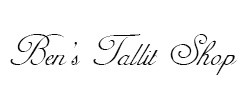If you read the comments below various articles on Jewish news websites, you might have noticed that sometimes the same names appear repeatedly, comments left by readers who like to toss in their two cents on all sorts of issues. On one such news site, there's a certain commenter who regularly advises Jews to keep a low profile.
This past Friday, Erev Shabbos Shira, when the ICJ issued its ruling on the "genocide" libel filed by South Africa, this prolific pundit, who goes by the pen name of Wooley Mammoth, wrote:
The media is attempting to make it appear as if Israel was found guilty of "genocide," which is utterly false, but ambiguous enough to convince millions of people to randomly attack Jewish people anywhere anytime. Be safe this Shabbat, do not be a victim. Switch out ALL the traditional garb for blue jeans and a baseball cap...oh, and alter the walking formation on the way to shul, it is visibly recognizable and obvious.
This is the sort of admonition which I imagine was common in 15th century Spain as the Inquisition started. So it sort of rubs me wrong to be advised to look in the mirror before I step out and make sure I don't look too Jewish.
Have you ever come across a halacha that you thought was applicable long ago, and would never be applicable again – then one day you realized there are present-day applications after all? Well, there's a halacha brought down in the Shulchan Aruch which says you can tuck your tzitzit out of sight in certain circumstances. Every time I came across this halacha, I imagined a shtetl Jew walking through a sketchy neighborhood late at night or in the wee hours of the morning when the drunks still lurk in dark alleys, sometimes pouncing on Jews either verbally or physically. But it seems tucking in tzitzit for safety reasons may be a topical issue in our day and age.
About five years ago much ink was spilled discussing the viability of wearing a kippah in European cities, and following the extraordinary spike in antisemitism worldwide during the past three months, the issue is now back on the table.
To see this halacha in black and white, open up the Shulchan Aruch, Orech Chaim to 8, 11 (here and here). Here the Shulchan Aruch discusses whether you should wear a tallit katan on top of your shirt, and the Mishnah Berurah cites an opinion that it should be under your shirt, adding in the name of the Magen Avraham that the tzitzit strings should definitely be showing. He then adds that those who mingle among non-Jews still fulfill the mitzvah if the tzitzit are tucked into the corners of tallit katan (as opposed to the pants).
It's a bit unclear to me what is meant here by tucking the strings into the corners (unless they used to make a tallit katan like the undershirt type today, which have little pockets used to tuck the strings in while laundering). Here's how that's explained in the Dirshu edition of the Mishnah Berurah:

So if you think this applies to you, when you consult your rabbi, I'd say there are several questions to clarify, namely:
1) What does the Magen Avraham mean when he refers to tucking the strings into the כנף?
2) In your particular set up circumstances, which hashkafah issues apply?
3) In your particular set of circumstances, could this be a case of pikuach nefesh (or ספק פיקוח נפש)?
Surprisingly, it seems that in pre-Holocaust Europe, it was common to wear tzitzit tucked in, and I know of an Ashkenazi yeshiva in Kiryat Sefer where the rosh yeshiva instructs the students to keep their tzitzit tucked in. From a halachic standpoint, this has never made sense to me. How can you argue against the Shulchan Aruch and the Mishnah Berurah? And how do you understand the verses we say at the end of Krias Shema, namely Bamidbar 15:37-40, if you cannot see the tzitzit?
Likewise, I find it hard to understand the argument that showing your tzitzit is an act of ostentatious piety.
 United States Dollar
United States Dollar
 Shekel
Shekel
 Euro
Euro
 British Pound
British Pound
 Australian Dollar
Australian Dollar
 New Zealand Dollar
New Zealand Dollar
 Canadian Dollar
Canadian Dollar
